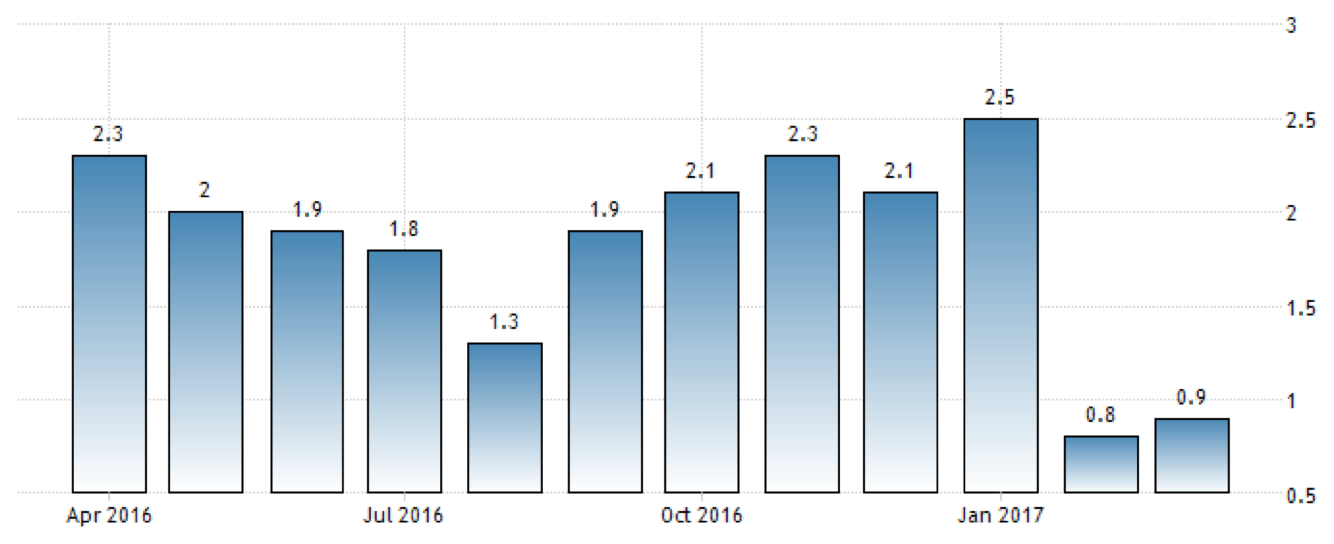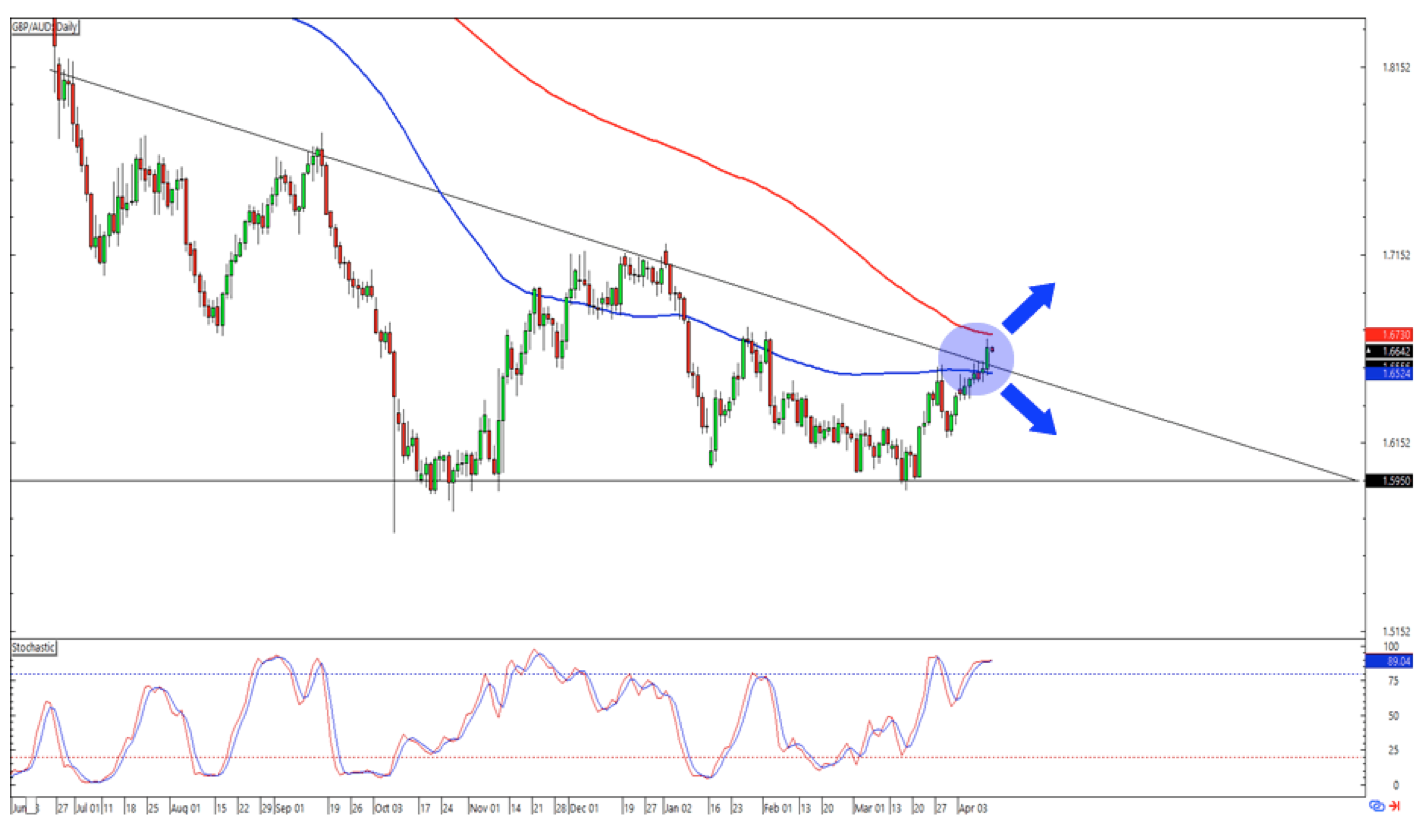Daily Insights Report 12/04/17
- 12 Apr 2017
China’s inflation rate showed to be below estimates for the month of March. China’s consumer prices rose 0.9% year-over-year in March of 2017, after a 0.8% rise in February while markets expected to gain 1.0%. While the cost of non-food rose more than in the prior month, the cost of food itself continued to fall. A look at how the inflation rate in China has changed in recent months can be seen in the graph below.

– The strongest performer amongst the major currencies was the Japanese Yen. After the Dollar weakened tow a four-month low against the Yen at 109.69, the Euro also weakened 1.0% against the Yen to reach 116.340
– The EURJPY has passed through support levels and actually fallen below the 200-day moving average of 117.64. Pressure on this currency pair is likely coming from both the French election as well as regional political uncertainty.
Commodities
– Stocks of energy companies were trading lower on Wall Street even as oil prices recovered from early signs of weakness. Brent crude settled at $56.23 a barrel, showing a gain of 0.5% after having fallen earlier to $55.45. This is the seventh consecutive day of advances for Brent crude oil. As a result of these gains, it has gained about 6.4%. Saudi Arabia is likely to support extending the OPEC output cuts into the second half of 2017 in an effort to increase oil prices.
– Gold jumped $18 per ounce, representing a gain of 1.5% to reach a five-month high of $1,272 per ounce.
United States Dollar(USD)
Import Prices (March)
It is believed that for import prices slipped 0.2% in March after seeing a gain of 0.2% in February. This would be the first decline in import prices since November. Part of the reason of this, is the impact of oil prices on import data. Looking at nonfuel import prices, it can be seen that they will likely be unchanged after having risen 0.3% in the month of February. The trend in nonfuel import prices has improved but still remains slightly low. An increase in Chinese producer prices should also add some pressure on nonfuel import prices.
Great Britain Pound (GBP)
Unemployment (February)
The UK’s headline inflation likely remained unchanged at 4.7% in the three months until February, which is the lowest level of unemployment seen since 1975. After January’s figures beat market expectations with both the number of employed increasing and the number of unemployed falling, some revision is expected for February. It is unlikely that these revisions would be enough to reverse previous gains. The number of vacancies remained high in February, and survey data all point to some stable growth in the labor market. They show further growth in both permanent and temporary job placements, even though the rate of growth is slower if compared with the past months.
Wages should have declined, as firms are choosing to freeze salaries instead of laying off staff. For this reason, we can expect the outlook for wages to remain subdued, while the economy for jobs should somewhat slightly weaken. The labor market always responds with a lag compared to shocks in the economy, and this can be seen now since the referendum decision from November. With uncertainty surrounding Britain’s exit from the EU, it is likely that fewer businesses will launch new projects and set up hiring drives in the country. For this reason, unemployment and self-employment are likely to weaken through this year.
Technical Analysis
GBPAUD

Looking at this currency pair, it can be seen that the current trading level of 1.6650 is just above the falling trend line resistance that has not been broken since the middle of last year. If a bearish strategy is taken agains this currency pair, it should be done after the currency crosses above the 200 day SMA, and this could be done through a shorting strategy.

